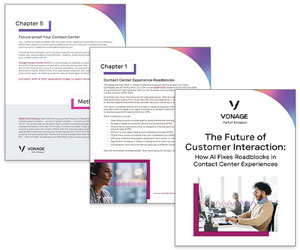Quick Overview
It’s critical that contact centre leaders take a proactive approach to spotting customers’ pain points to improve the overall customer experience and drive down call volumes, including initiatives, such as:
- Take Your Agents Out for Lunch for an Honest Conversation
- Stop Tagging Issues as ‘Other’
- Make the Customer a Central Figure in Your Boardroom
In this article, our consultants’ panel share practical suggestions on how contact centre leaders can proactively spot their customers’ pain points.
Do You Know Why Your Customers are Calling?
When struggling to deal with customer demand, a lot of contact centres try to recruit more people.
Instead, leaders need to understand why demand is so high – by spotting their customers pain points so they can do something about them.
Here are 25 ideas to help you tune into, and better understand, your customers’ pain points:
1. Take Your Agents Out for Lunch for an Honest Conversation

Take your agents to lunch and ask them about their pain points. If something is a pain point for your employees, I guarantee this is bleeding into their customer support activities, and the external customers are unhappy.
Why take your agents to lunch? It takes them off-site for a private conversation where you are the only person taking notes. It physically moves your agents, and physically moving them mentally allows them to depressurize.
Assure them the notes are only for your memory, no names, you will not take the credit and will not pass along any blame or damaging blowback. The idea of taking your people off-site to lunch is to build trust; when you have your agent’s trust, you will empower them enough to trust you with their pain points.
Contributed by: Dr M. Dave Salisbury, COO at D&C Consulting LLC
2. Stop Tagging Issues as ‘Other’

Identify the real reasons for customers having to make contact in the first place.
If recorded correctly, this can identify:
- The most common points of failure that can be resolved in product design
- Frequently asked questions that could be provided on a website or through AI
- Products/services that require the most support or which fail the most regularly
Too often I see an option named ‘Other’ as having the highest number of contacts. This needs to be broken down further and the headings developed over time.
One way is to have high-level headings and then break them down at different times or when increases occur. This enables an accurate analysis without exhaustive call closures.
Contributed by: Martin Jukes, Managing Director at Mpathy Plus
3. Make the Customer a Central Figure in Your Boardroom

Customers represent not merely a demographic, but a critical part of any business narrative. By probing beneath the immediate queries, we can unveil systemic issues, leading to improvements that enhance the complete customer journey.
After all, the contact centre is only one touchpoint. Customers’ interactions with your brand form a multifaceted web of experiences. Each impression, whether it’s with your employees, digital platforms, or customer service, influences their overall brand perception.
To spot and address these pain points effectively, ‘customer’ must be integral to your strategic planning. This means creating a compelling narrative around the ‘customer’, where all stakeholders, from HR to Tech, participate in shaping and refining their experiences. It’s not just a mandate for your customer service or sales teams. Rather, it’s everyone’s responsibility!
Incorporate this by dedicating a portion of every board meeting to discuss ‘customer’ in depth. Not only talking about sales or conversion rates, but exploring real customer stories, their triumphs, their struggles, and their journey.
By making the customer a central figure in your boardroom narrative, you foster an environment where all feel a responsibility towards enhancing the customer experience.
Contributed by: Rob Clarke, Director and Co-Founder of Elev-8 Performance
4. Train Frontline Employees to Note Recurring Issues

Have employees capture information customers provide about your products and services that can then be shared with the departments that need to hear it.
You can also train frontline employees to identify and note recurring issues, complaints, or areas where customers seem especially dissatisfied.
5. Collect ‘Breadcrumbs’ of Data – Including Social Media Feedback
Think about the customer data at your disposal… Those breadcrumbs of data that customers leave behind as they interact or transact with your brand, e.g. point-of-sale data, website analytics, shopping cart abandonment, etc…
You can also monitor social media sites for feedback, mentions, comments, and messages relevant to your brand.
Contributed by: Annette Franz, CCXP, Founder and CEO at CX JOURNEY Inc.
6. Find Out Where Your Agents Are Venting

Figure out where your agents are talking, or venting, about their customer interactions. In a traditional contact centre, this occurs in cubicle aisles or in the lunch room.
If your team is hybrid or remote, read through your customer support channel in Slack, Microsoft Teams, or another collaboration tool of choice.
Worried about being viewed as a micromanager? Don’t. Your agents are talking and many of them have resigned themselves to the fact that no one hears or cares.
When you join the conversation and work to address these pain points, your agents will instantly feel valued and heard.
7. Think About Why You’ve Just Had to Say “No” to a Customer
Pay attention to any time you have to tell a customer “No.” Customers come to you with a problem in the hope that you can provide a solution.
If you don’t have a solution, they will take their business elsewhere. Regularly review these cases with an open mind and you’ll have a much better understanding of your customer pain points.
Contributed by: Jeremy Watkin, Director of Customer Experience and Support at NumberBarn
8. Embrace Technology to Organize Insights

Lean into the capabilities of artificial intelligence (AI) and analytics to listen to and analyse customer calls.
For example, companies such as CallMiner can analyse calls, listening for common issues and problems.
With the help of technology, you can therefore organize your insights for full transparency that “these customers all called about THIS problem”, whilst “this group of customers all called about THAT problem”.
9. Run ‘The Moment of Misery’ Exercise
Sit down with the frontline! As a regular exercise, put a group of contact centre agents and leaders in a room.
In small groups ask them this question – “what are the top 3 problems and issues that you hear customers calling in about?” These are your ‘moments of misery’.
When you have a list, ask the following questions:
- What is the problem?
- How often does this happen? (This is an important question, as if you get these calls EVERY day you need to figure out a way to eliminate this problem from happening as quickly as possible.)
- What do you do about it? E.g. update the website information, report the problem to another department?
You should aim to do this exercise once every six months – minimum. Ideally, you’re looking to tick things off the list, so the list shortens and changes over time – keeping momentum going with this key customer service project.
10. Make Sure You’re Listening Out for Both Types of Problem
Did you know? There are two kinds of problems customers have:
- The pain point that’s causing the customer to call in in the first place.
- The pain point with the customer experience in getting the answer they need.
You need to remember to explore and address both types to truly eliminate customer pain points.
Contributed by: Shep Hyken, CAO (Chief Amazement Officer) at Shepard Presentations LLC
11. Celebrate Customer Relationship Anniversaries With Check-In Meetings
Schedule time yearly or every six months to thank customers – via video or in person – ask questions and listen to feedback.
12. Appreciate Complaints as Free Advice on How to Improve

Appreciate complaints and negative feedback. This is free advice on where the flaws are and how to improve your business.
This should be seen as a positive thing to improve – not a hindrance. Some systems can even automatically generate reports to spot trends in complaints.
13. Regularly Look at What’s Being Said on Review Websites
Regularly look at review websites such as TrustPilot and TripAdvisor. These give a wealth of knowledge on what is good with your business and where those pain points are.
Contributed by: Dan Pratt, Founder and Director DAP Consultancy
14. Align the Contact Centre With Other Departments

Ensure that the contact centre is aligned with teams across the organization.
An organization must understand that issues make themselves known typically via the contact centre first. If an organization is not aligned, it will not know what the root cause of the issue is, or how to address the issue in a timely manner and completely.
When the contact centre is aligned, teams can work together to create specific questions to ask customers in surveys, or direct interactions to pinpoint issues quicker, or adjust how AI and NLP tools are working in the contact centre to make them work harder, and to look for specific items in sentiment analysis to deepen customer understanding.
Connecting these golden insight dots helps an organization deepen its customer understanding as well as determine the true root causes of issues, so it can make informed decisions based on this learning and make improvements to the customer’s experience and the bottom line.
Contributed by: Sue Duris, Principal Consultant at M4 Communications, Inc. and Non-Executive Director for Customer Institute
15. Allow Agents the Time to Truly Listen to Your Customers

Really listen to what someone else says, in the way that they want to say it. Customers don’t speak our language; they don’t start the story in a neat chronological order that fits our process flow, and they may not have been able to navigate the automated system that got them here.
Feeling really heard isn’t a very common experience, yet the value of this is often underestimated. If I call about something, and I manage to navigate the (now) notorious automated systems that contact centres put in place, then when I speak with someone, if they can really hear me, and can help me, then I have TRUST. And when I have TRUST, I will let you know about the website, or the issue on my monthly bill, or the other things that makes your company hard to deal with.
Contributed by: Dawn Wray, Therapist, Coach and Listener at The Listening Collective
16. Lean Into Your Customer-Facing Teams

Every day the frontline sees and hears the problems your customers face.
We all know that old statistic, that only 1 in 26 customers complain, and although that figure may not be entirely accurate these days, the sentiment remains true.
Although a customer may not submit a formal complaint, it doesn’t mean they aren’t unhappy, and it’s on these occasions that the frontline can provide visibility on these non-complained-about problem areas.
Where individuals can only speak of their own frustration, frontline teams can see where it ripples across multiple customers. This can support the prioritization of continuous improvement work.
Contributed by: Katie Stabler CCXP, Founder and Director at CULTIVATE Customer Experience by Design
17. Listen to Customers in Their Words – NOT Your Jargon
For the past twenty years, I’ve spent many a day working on and writing about this subject.
What has remained constant through this work and sharing of best practices includes:
- Listen verbatim, i.e. precisely in their words, not in your jargon
- Classify any quantitative or qualitative data or insight you gather against those verbatims (we might call them ‘needs’ or ‘intents’)
- Use the value irritant 2-by-2 matrix of valuable contact/ irritant contact for your customer / for your business to identify the right strategies for elimination, automation, simplification and investment of people’s time.
- Start by removing the root causes of unnecessary contact, which may lie right across the business, by assigning executive ownership to each customer intent.
18. Have the Stamina to See It Through – Year After Year

Remember, spotting one-off customer pain points isn’t complicated. Many companies try it, and some succeed for a while, but few stick at it with the stamina required, year after year, CEO after CEO!
The most consistent business problem is that people look for shiny new silver bullets in CX, whereas the approach requires focusing on the mundane, the everyday needs which many can take for granted.
Contributed by: Peter Massey, MD and Co-Founder of Budd UK Ltd
19. Put Yourself in the Shoes of Your Customers
We should put ourselves in the shoes of our customers, and even think of the scenarios and situations we face when calling contact centres ourselves as customers.
Then, identify what we want from the experience when we call, such as:
- “I want to get through to the right person the first time around.”
- “I want quick resolution.”
- “I want to feel like I am someone to the business I am a customer of.”
20. Pick up the Phone to Understand Poor Customer Effort Scores

When tracking customer effort, it’s important to follow up on those poorer scores to learn where it was not easy for the customer.
As leaders, it’s nice to make several of those calls. It’s also great for our customers and brings us as leaders closer to the business and what customers want.
Contributed by: Clayton Drotsky, Director of Growth Crew Ltd
21. Define Keywords to Include in Your Digital Channel Strategy
When people get in touch with your contact centre, it’s the perfect opportunity to identify opportunities for providing additional value that may not have been the original reason for reaching out.
It always starts with having a well-defined business strategy and how to relate this to customers by training your advisors to look for relevant hooks.
There are many ways to achieve this, one of which is to define keywords to include in your digital channel strategy.
For example, you can use keywords related to problems, complaints, difficulties, and queries, so when a question from your customers contains one of these words, you can prioritize contacting them with the relevant solution, but also use this as a basis to proactively search for solutions for the wider business.
22. Use Speech and Sentiment Analysis Software

There are many ways to collect customer input, and the most important thing is to create a continuous (feedback) loop and use that input for operational improvement.
Use speech and sentiment analysis software to detect and record customer pain points faster and use them for relevant training. Think of the IVR, key phrase or sentiment analysis, proper call logging or interaction clustering, and collaborating with operations too.
It is also crucial to have a procedure for recording contact reasons and use it to analyse the current business status.
Contributed by: Irina Mateeva, Founder of RightWFM
23. Regularly Ask “What If…?”

Within your contact centre, there’s a significant, often underutilized, resource: the people who are actually interacting with your clients. You need individuals with hands-on experience, those who can ask the critical ‘what if’ questions that drive your solution mapping.
Consider this scenario: Barry struggles with your automated system. He becomes frustrated when all he wants is to speak with a human. His pain point is the automated system: your usual self-service doesn’t work for him.
One of your agents then poses a question: ‘What if we created a dedicated support line for such customers?’ This solution might not be perfect, but the agent who has suggested it has shown a desire to effect change.
In truth, no one understands your customer pain points better than your agents. They are the ones who can provide the most accurate and insightful feedback about what your customers are experiencing. So, why not include them in the conversation?
Contributed by: Kim Ellis, Chief Learning Architect at Go Ginger Learning Solutions
24. Keep an Eye on Your Auto Messages
My credit card company’s fraud prevention protocols rejected my online purchase. So the retailer sent a form email stating that my purchase was “on hold” until I contacted them with updated credit card information.
I called immediately since I did not want to miss out on this purchase. However, when I called the retailer, the agent said, “Oh, I know our email says that. But that’s not what happens.” It turned out my order had been cancelled.
So the agent instructed me to go back to their website and begin my order from the start! Sigh! The agent also said their form letter has been like that for a while, and she does not know why it has not been updated yet.
My guess is there is no mechanism in place for customer (and agent) suggestions to be captured and acted upon.
25. Review Your Customer Journey

The reason I bought my new clothes dryer online was because I was about to leave on vacation. I did NOT have time to go to a “bricks and mortar” store. Plus, I wanted to arrange everything so the dryer could be installed when I returned home.
However, what was supposed to be a “one click” purchase wound up involving SIX different phone calls with six different company representatives to confirm delivery and book an installation time.
On top of that, their website only suggested one of the two parts necessary to install this natural gas-powered clothes dryer.
However, I did not find out about the missing part until my FIFTH phone call with them. At that point, I was told a second part was needed, and they did not know why their own website failed to mention it. So, I had to drop everything and drive to their store to get that part. That defeated my purpose of buying online to save time!
I should say that every one of the six people I spoke with seemed nice! However, this retailer’s customer journey is broken! Their website does not suggest the correct installation parts. Their company’s auto emails contain incorrect information.
Their delivery and installation teams do not communicate with each other. A proper customer journey map would uncover these issues. It would allow this retailer to fix these problems and produce a positive customer experience.
Contributed by: Mike Aoki, President of Reflective Keynotes Inc.
We have got some more great articles from the experts that you should read next:
- What Are the Main Call Centre Pain Points, and How Can They Be Solved?
- 35 Surefire Ways to Demotivate Your Best Agents
- How to Keep Morale Up in a Short-Staffed Contact Centre
Author: Megan Jones
Reviewed by: Jo Robinson
Published On: 2nd Aug 2023 - Last modified: 22nd Oct 2025
Read more about - Customer Service Strategy, Annette Franz, Clayton Drotsky, Communication Skills, Customer Expectations, Customer Service, Dan Pratt, Dave Salisbury, Dawn Wray, Editor's Picks, Irina Mateeva, Jeremy Watkin, Katie Stabler, Kim Ellis, Martin Jukes, Mike Aoki, Peter Massey, Rob Clarke, Service Strategy, Shep Hyken, Sue Duris









































